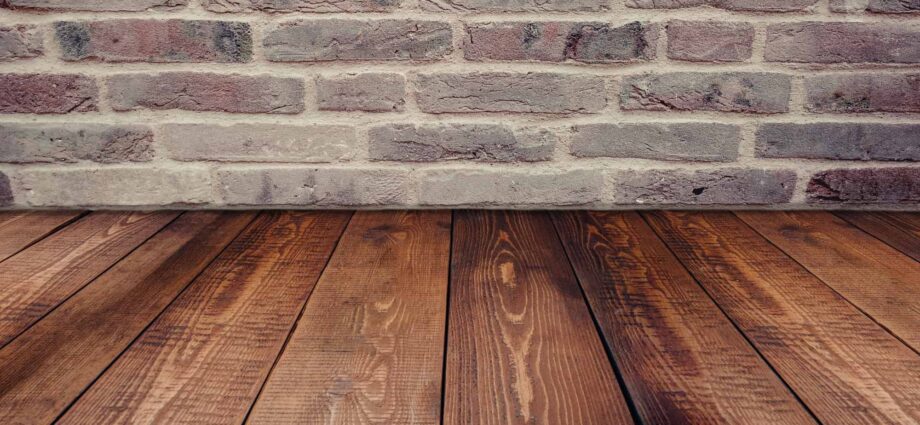Hardwood flooring bring charm and coziness to any residence. A part of their beauty is that, like a quality wine, they only improve with age. Each scratch and fissure in your floor’s patina tells a separate tale of the past years, decades, or even centuries, just like you are.
Indeed, to some extent. Golden or gray colours may turn dull and mottled. Gouges will attract your attention, diminishing the natural beauty of your floor. DIY hardwood floor refinishing may be necessary in such cases.
When to Recoat Wooden Floors
After Extensive Everyday Use
Hardwood floors are resilient and long-lasting, but they are not impervious to stains, dog claws, chair legs, or dirt. Even normal daily use can cause visible wear patterns on older hardwood floors. Consider refinishing your hardwood floors if they have scratches, water damage, discoloration, and a dull appearance.
After Removing Previous Flooring
If you’ve recently removed old carpet or laminate flooring and are fortunate enough to have hardwood underneath, this is another excellent opportunity to refinish hardwood floors yourself. Additionally, you can refinish your floors to alter their color. You will be able to choose a new stain color for your flooring after sanding removes the top layer of stain.
After Ten Years
As a general rule, hardwood floors should be sanded and refinished every seven to ten years. Throughout the lifetime of a typical 3/4-inch solid hardwood floor, you may repeat the process four to ten times.
Not certain if your floor requires refinishing? Sprinkle some water on its surface. If water beads on your floors, they are probably in good condition. If the water immediately absorbs into the wood, it is time to refinish.
Consider that buffing may mitigate minor damage. This includes superficial scratches that only affect the top layer of the floor’s sealant. Similar to an exfoliant for your floor, buffing can be used as a spot treatment to target only small areas that require it. For a complete sanding and refinishing, however, the entire floor must be treated.
Can My Hardwood Floor Be Renewed?
Ensure you are aware of the flooring type before beginning. Solid hardwood flooring is ideal for sanding and refinishing. Depending on their thickness, you can also refinish engineered wood floors. Typically, 0.75 millimeters (mm) to 1 millimeter (mm) are removed while sanding old hardwood floors. If the wear layer on your engineered wood flooring is less than 1 millimeter, you should not refinish them.
Be cautious when refinishing engineered flooring with wear layers of at least 2 mm. Keep track of how many times you have refinished them so that you do not overdo it. Be mindful that sanding and refinishing will remove unique design details if your floor was hand-scraped or distressed to give it a rustic, lived-in appearance.
Remember that laminate flooring cannot be refinished. There are occasions in which a floor may be irreparable, and replacement is preferable to refinishing. Indicators that you need new flooring include:
- Extreme cupping due to water damage
- Structural issues necessitating subfloor repairs Wide gaps between planks or movement between boards
- An abundance of visible nails
- The excessive sanding has rendered the wood too thin for additional restoration.
How Can I Determine Whether My Floor Is Solid or Engineered Hardwood?
If you are uncertain about the type of flooring you have, according to roll off dumpster rental miami remove a floor air vent and take a look. Solid flooring that is at least 3/4 inches thick is ideal for refinishing. If you observe thin layers of wood, then you have engineered flooring. Refinish with extreme care, if at all.
The wear layer is the top layer of an engineered wood floor. Contacting the flooring manufacturer or using a ruler to measure the thickness of the wear layer through the air vent will determine the thickness of the wear layer.
How Much Does It Cost to DIY Hardwood Floor Refinishing?
DIY hardwood floor restoration is significantly less expensive than hiring a professional, if you are up to the effort. Expect to pay between $2 and $8 per square foot to have a professional sand and refinish your hardwood floors. Depending on your region and desired finish, this varies. For dustless refinishing, which requires the use of specialized commercial vacuums, you may expect to pay near the top of this spectrum.
Are you going it alone? Consider renting the necessary equipment for refinishing hardwood floors whenever possible. Even if you only hire a drum or orbital sander for $160 to $270 a week and buy the rest, depending on the complexity of your job, it will cost between $500 and $1,000. According to Angi, the following are the average expenses for necessary tools and equipment:
- Drum or orbital sander rental — $60 a day/rental
- $7 to $40 per gallon for stains
- between $165 and $360
- Purchase of a belt sander and other sanding materials — $140
- $125 for painting equipment and tools
- $150 for cleaning and safety equipment
If your current flooring is in too poor of condition to be refinished, you should install a new hardwood floor. Labor and supplies will likely cost between $6 and $18 per square foot. This can rise to approximately $25 per square foot for upscale wood alternatives.

